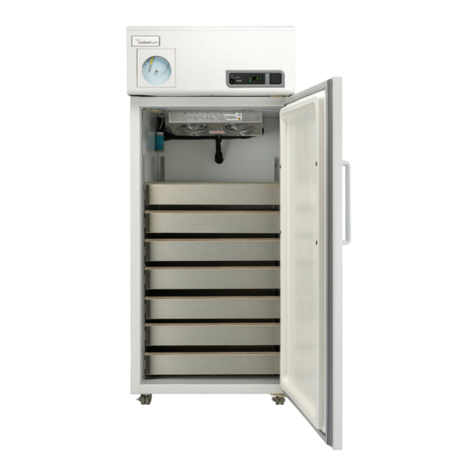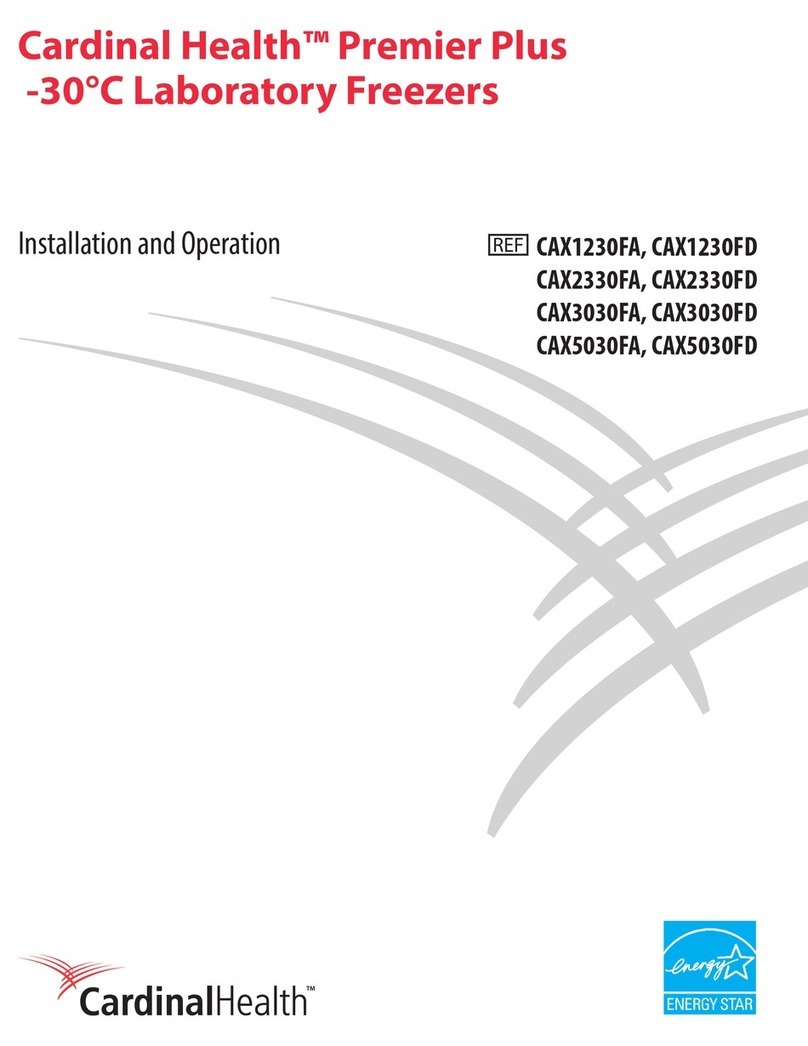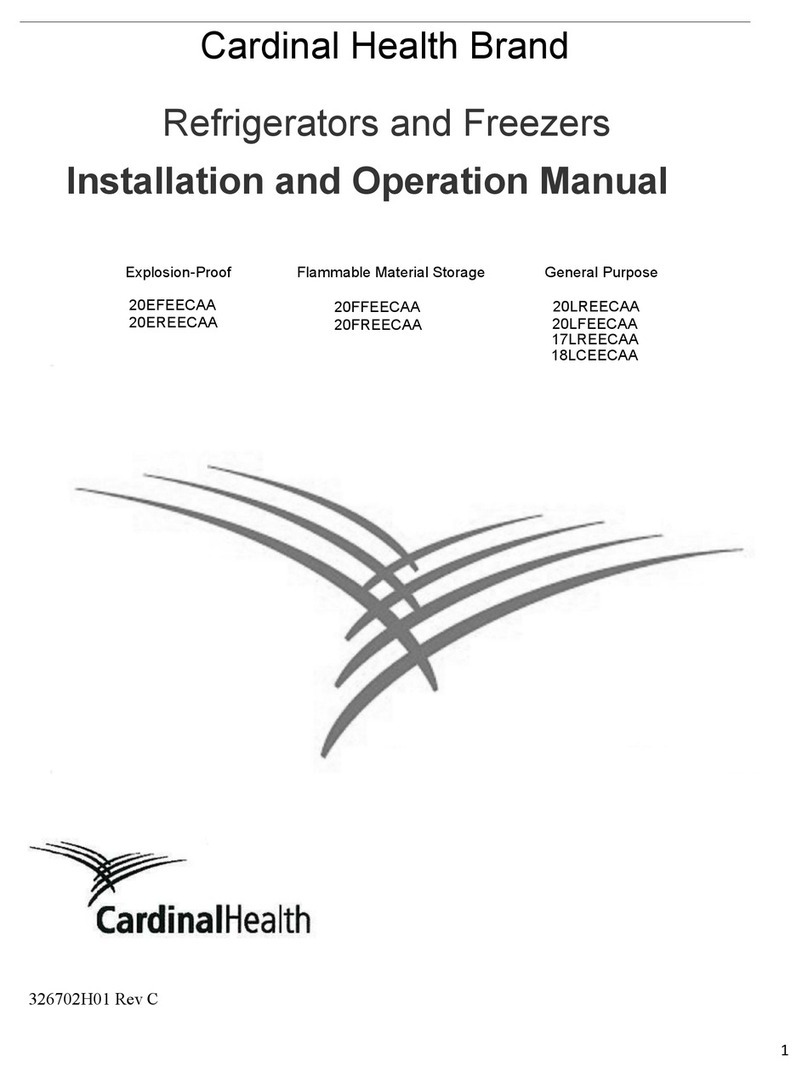
7
6. Explosion-Proof Refrigerators and Freezers
Overview
The Authority Having Jurisdiction (AHJ) determines if work areas are designated as a hazardous location with
respect to the presence of ammable gases or vapors. Such locations are dened in (National Fire Protection
Agency) NFPA 70 Articles 500- 501, OSHA 29 CFR1910.307, and NFPA 45. Some of these classied areas are
expected to experience concentrations of ammable gases and/or vapors at or above their lower ammability
limits for extended periods of time.
The construction of our Explosion-Proof Refrigerator and Freezer has been evaluated by Underwriters
Laboratories (UL) and are suitable for use in classied areas requiring Class I, Groups C and D* protected
equipment. The electrical components such as thermostats, wiring, splices, relays and compressor motors on
Explosion-Proof Refrigerator and Freezer are safely housed within explosion proof enclosures and conduit.
Compressor surface temperatures have been evaluated and determined to remain below the ash point
of materials found in Class I, Groups C and D. All models have heavy-gauge, rigid, steel construction with
a durable enamel nish. Interiors have epoxy enamel or ABS plastic construction. Each unit is insulated
throughout for energy-ecient operation.
These units are designed to meet the standards established by Underwriters’ Laboratory, Inc., OSHA and
National Fire Protection Association for storage of hazardous materials.
On Explosion Proof Refrigerators and Freezers all ferrous ame paths are protected from corrosion by the use
of petroleum jelly [or petrolatum or soap-thickened mineral oils].
It is important to note that Explosion-Proof Refrigerator and Freezer must be connected to the power supply
source by rigid metal conduit with proper ttings suitable for Class I, Groups C and D* hazardous locations.In
addition, the wires inside the conduit must be sealed.
Explosion-Proof Refrigerator and Freezer require being hard wired into the building electrical system and
therefore require a qualied electrician to install as per the “local electrical requirements and NEC Standard” or
“Canadian Electrical Standard".
*The notation Class 1, Groups C and D is an accepted abbreviation for Class I, Div 1, Groups C and D; Class I
Zone 1 Group IIB.
WARNING: For Explosion-Proof Refrigerator and Freezer where ammable materials are stored in
the cooling chamber, the cooling chamber is considered a Class I Div1 or Class I Zone 1 hazardous
location. Any monitoring devices placed in the cooling chamber must have an intrinsically safe
rating from an appropriate certication body, such as UL, CSA, FM etc. (this includes battery or
solar powered devices).
Thermocouples for building monitoring systems must be wired through an electrical barrier designed to
provide isolation against voltage and current spikes, which could cause a spark resulting in re or explosion.
It is the your responsibility to meet these requirements. Thermo Scientic cannot assist with the selection of
devices, recommend, approve or design any device or monitoring circuit.
Note: If any questions pertaining to electrical safety arise, please refer to article 501 of the US National
Electrical Code.






























